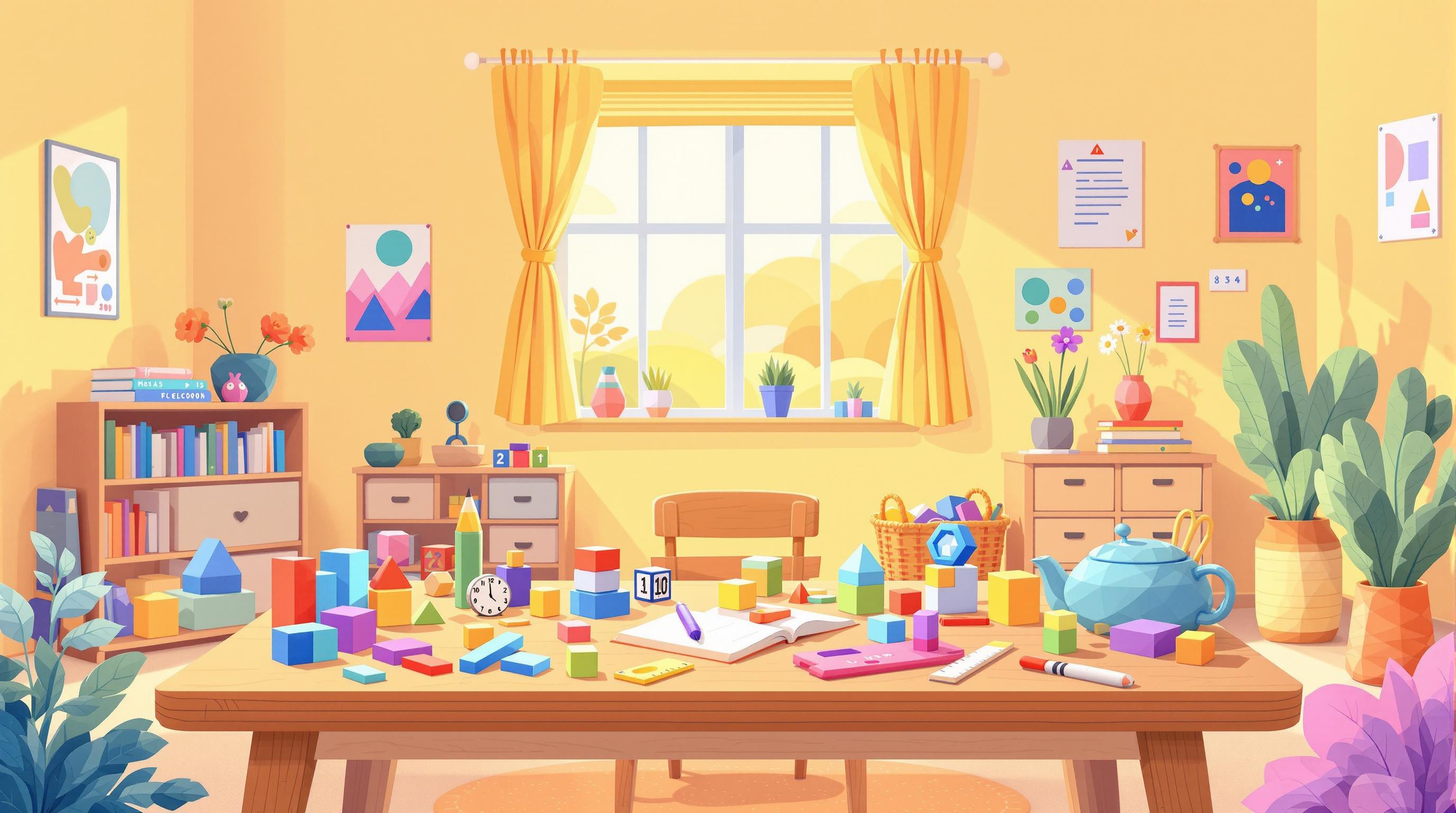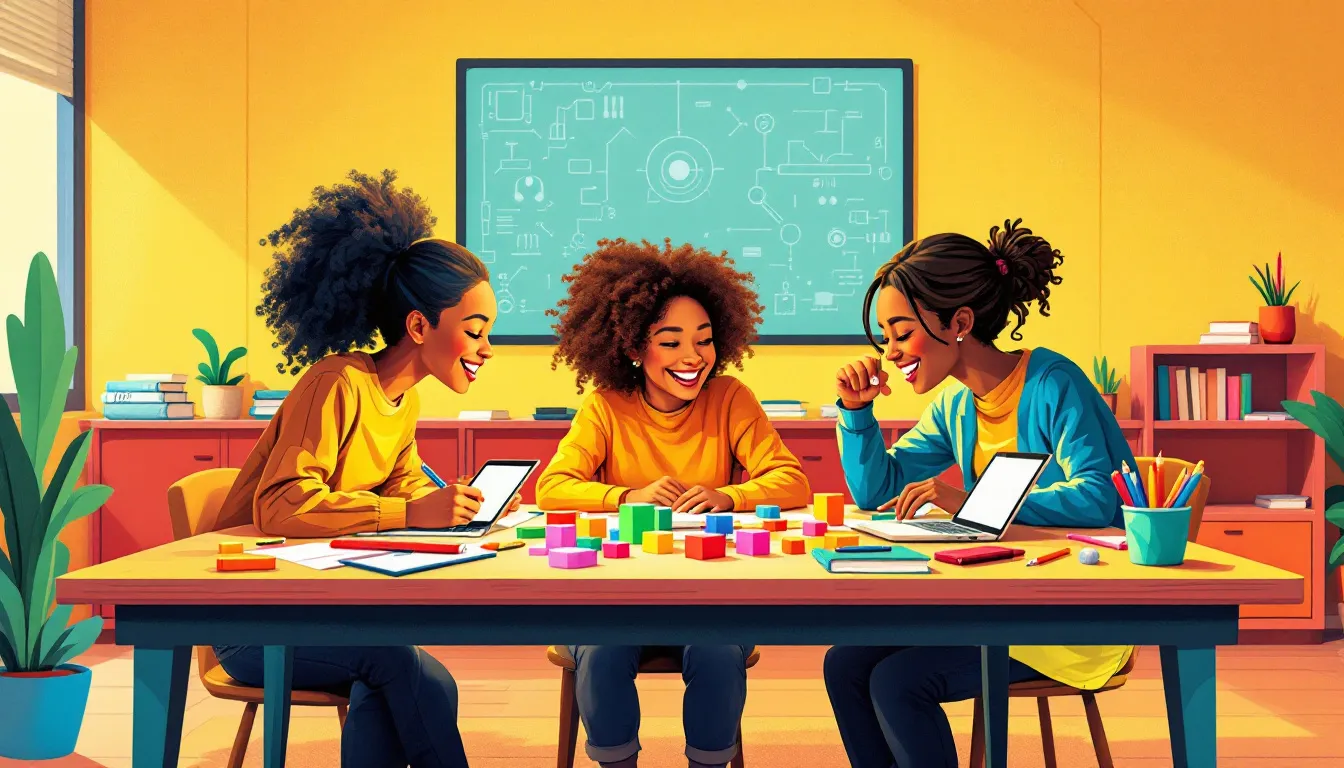Hands-on science experiments make learning fun and interactive. They help students understand concepts by doing, not just reading. This article provides easy, classroom-friendly experiments across four subjects:
- Physics: Visualize sound waves, explore air pressure, and create a tornado in a jar using everyday items.
- Chemistry: Learn about molecular interactions with colorful milk patterns, homemade lava lamps, and shaving cream rain clouds.
- Biology: Investigate seed growth, observe plant transpiration, and explore living cells under a microscope.
- Earth Science: Build a model of Earth's layers to understand geology.
These activities are simple to set up, affordable, and align with educational goals. Teachers can adapt them for different age groups and encourage critical thinking through observation and analysis. Dive in to make science engaging and memorable for students.
1. Physics Experiments
Here are three fun and educational physics experiments that use everyday materials to explain important scientific ideas.
-
Sound Wave Visualization: Dancing Corn
With a speaker, some corn kernels, and a plastic container, you can show how sound waves travel. The kernels "dance" as the sound waves create visible patterns, making the concept of mechanical waves easy to understand. -
Atmospheric Pressure: Balloon in a Bottle
Using a plastic bottle and a balloon, this experiment demonstrates how trapped air illustrates air pressure. It's a hands-on way to explore the relationship between air pressure and volume. -
Vortex Formation: Tornado in a Jar
Combine water, dish soap, and a jar to create a mini vortex. This simple setup helps explain centripetal force and how rotation works, tying fluid dynamics to weather phenomena like tornadoes.
These experiments can be adjusted for various age groups by tweaking explanations or introducing new variables for deeper exploration. Up next: chemistry experiments that showcase fascinating reactions and compounds.
2. Chemistry Experiments
Here are three fun and interactive chemistry experiments that help explain important scientific concepts:
-
Magic Milk Color Explosion
Watch surface tension in action as dish soap interacts with the fat molecules in milk, creating swirling, colorful patterns. This is a great way to visually show how molecules behave and interact. -
Homemade Lava Lamp
Explore density and polarity by combining water, vegetable oil, food coloring, and effervescent tablets. The result? A lively, bubbling display that highlights how different substances interact based on their physical properties. -
Shaving Cream Rain Clouds
Using a jar of water, shaving cream, and food coloring, simulate how water droplets form and fall as rain. This experiment links weather patterns like precipitation to basic chemistry concepts.
These activities are designed to encourage hands-on learning and align with educational standards. According to the American Chemical Society, such experiments help students build critical thinking skills and stay engaged in the learning process [4]. Teachers can enhance the experience by having students predict outcomes and document their observations.
"Active learning through hands-on activities promotes retention and improves performance on assessments", states the American Chemical Society's guidelines for classroom experiments.
Next, we'll dive into biology experiments that make life sciences come alive with practical, engaging activities.
sbb-itb-bb2be89
3. Biology Experiments
These activities focus on hands-on learning, giving students a chance to dive into life sciences through practical, engaging methods:
-
Seed Growth Investigation Station
Turn your classroom into a mini-laboratory with a seed germination experiment. Students plant the same seeds but test different conditions like light exposure, water levels, or soil types. They track changes daily, noting height, color shifts, and other visible traits. According to Ward's Science, this activity sharpens students' biology-related analytical skills [3]. -
Plant Transpiration in Action
Show how plants manage water by wrapping plastic bags around leafy branches. Within a day, students will see water droplets form, making the process of transpiration easy to observe. This ties directly to lessons on plant biology and water cycles [2]. -
Living Cell Microscope Adventure
With simple materials like onion skin or cheek cells, students can view living cells under a microscope. EducaSciences highlights that this method engages students far more effectively than textbook-only lessons. It also helps them practice microscope skills and explore cell structures up close [1].
These experiments are safe, easy to set up, and rely on common materials, making them both practical and impactful. Teachers can deepen the learning experience by encouraging detailed observations and integrating data collection into each activity.
Next, we’ll look at earth science experiments that help students connect with the natural world.
4. Earth Science Experiments
Build a hands-on model of Earth's layers to explore geological concepts. By layering different colors of modeling clay, students can create a detailed representation of Earth's internal structure. Ward's Science resources highlight that this activity helps students better understand Earth's composition by making it more visual and interactive [3].
Use the following colors to represent Earth's layers: red for the inner core, orange for the outer core, yellow for the mantle, and brown for the crust. The American Chemical Society suggests incorporating math into the lesson by having students calculate and scale the relative thickness of each layer [4].
Here are a few tips to make the activity more engaging:
- Encourage students to document their observations and thoughts in a lab journal.
- Facilitate discussions about how Earth's layers contribute to natural events like earthquakes and volcanoes.
- Plan for about 45 minutes to complete the activity, including time for discussion.
Conclusion
Hands-on experiments make science more engaging by transforming abstract ideas into real-world experiences. According to the American Chemical Society, interactive learning activities can improve critical thinking and problem-solving skills [4]. When students actively take part in experiments, they gain a stronger grasp of scientific concepts and are more likely to remember what they’ve learned.
Teachers can begin with simpler experiments and gradually introduce more complex ones, ensuring students remain challenged but not overwhelmed. Ward's Science highlights that structured experiment kits help students build their understanding step by step as they move through different grade levels [3].
Setting up dedicated classroom spaces for experiments can make implementation smoother. Always prioritize safety while encouraging active participation and exploration. These experiments align with curriculum goals and promote both critical thinking and scientific inquiry.
While shared experiments provide a good starting point, they should be seen as flexible guides rather than strict templates. For classrooms with limited resources, focus on experiments using everyday items that still illustrate essential scientific ideas.
Cultivate a culture of curiosity in your classroom. Encourage students to record their observations, share their discoveries, and relate their findings to practical, everyday situations. By weaving these experiments into your teaching, you can spark curiosity, deepen knowledge, and inspire future scientists.


